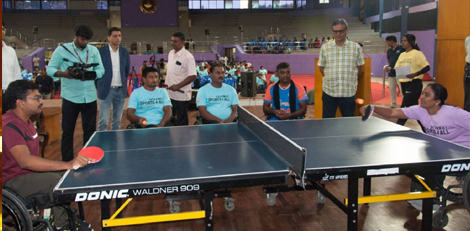What is posture and what is poor posture?
Posted on: 25/Dec/2018 12:16:56 PM

First things first - what is actually posture? By the term posture, we do not mean the position. It is about the habits and responses that we provide to anything that hinders our upright functioning like the gravity, improper anatomy or poor conditions of works or athletic challenges.
Upper crossed syndrome
Upper crossed syndrome is one of the most common examples of poor posture. This may be technical. It is nothing but having our head and shoulders in the front in most of the times. This has a lot of complex assumptions regarding its causes and consequences. In this case, the muscles tend to be dysfunctional. There are a few muscles that are too weak and a few that are too tight. When seen from the sides, there can be a diagonal line drawn across.
What is called poor posture?
In any position where you stress your body physically and find it tough to manage the postural changes, you call it poor posture. When there is any kind of postural challenge, you will not feel comfortable in any position at all. Improper tool use is the first and most important cause of poor posture. Of the most common examples is the long hour sit in front of the computer, on your chair.
What is called postural laziness?
When you think of a poor posture, you automatically think of postural laziness. This is mainly because of slouching. When you avoid postural changes, it will lead to very poor fitness in terms of posture.
Correcting postures is a very tough habit to adapt for a lifetime to avoid some of the chronic body conditions such as back pain, nerve weakness and neck pain. Crooked sitting and bad posture can very much weak the whole nervous and bone passages of the body mainly spine. Spine is like the highway of our body that is responsible for the travel of various fluids in and out. When posture is bad for a longtime then the pathway gets blocked leading to stagnation of fluids resulting in bone joint pain and other mobile distress.
Prevention is better than cure
Posture makes all the difference in our older age in terms of chronic pain and stress on our joints. Poor posture can later affect us in the form of joint arthritis and other nerve related issues. There are some studies that suggest the poor posture resulting in emotional stress in human beings. So it is advisable to have a concern with posture to avoid stress and other related issues gained from poor posture.
Good Posture
A good posture is not only sitting or standing straight to an angle of ninety degree. It is actually the movement and mobility of the whole spinal system. Moving and changing postures frequently is what we call as good posture. Unlike other mammals Human beings are strangely standing straight with a vertical spine system. So it is essential to change the posture repeatedly to give equal amount of stress to all working muscles, joints and nerves.
People sitting for a whole day in front of computers should not keep their neck and head in front of their own spine. This can stress the neck and can bring chronic pain in neck and back regions after few years of poor posture. Frequently stretch your body and walk a little if your work k is entirely based on sitting in a place. Good posture is movement not sitting straight all the day. Walking and other exercise works out different muscle groups and joints that was originally designed by nature for human beings to travel long hours and sustain in challenging environment. Stopping the actual usages of those body system will actually bring negative impacts is not a surprising fact.
Improving the posture
It cannot be achieved overnight with minimal efforts. Good posture is like a good habit and it takes lot of time and effort to accomplish. Good posture is not only the bodily positions but also the fitness of our body. Gaining fitness in the forms of exercise, good eating habits and stress free life are the only ways to have a healthy lifestyle. Then rearranging ourselves for detailed postures and body movement can further enhance our health says the experts of posture importance.







